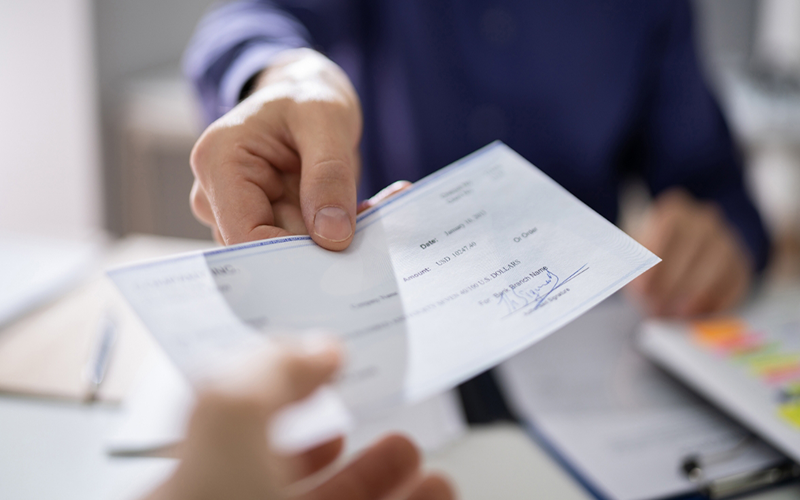Essential Steps to Prevent Check Fraud
April 17, 2025

Even with the rise of digital payments, traditional paper checks remain prevalent in certain industries and are still a prime target for fraud. Criminals take advantage of weak spots in the check-writing process, putting both individuals and businesses at risk. In this article, we’ll explore common check fraud schemes and offer practical steps to protect your money.
Common Check Fraud Schemes
- Forged signatures. One of the simplest forms of check fraud involves forging the account holder’s signature. Criminals may copy the signature from a stolen check, or in some cases, attempt to guess it. This can lead to unauthorized withdrawals and significant financial losses.
- Check washing. Criminals use chemicals to erase the ink on a legitimate check, allowing them to change the payee and amount. They can then sell the blank signed check or fill it out to themselves and deposit it.
- Counterfeit checks. Advances in printing technology enable criminals to produce counterfeit checks that are nearly indistinguishable from legitimate ones. These fake checks often replicate the look of authentic checks, making them difficult to spot. Red flags include missing security features like watermarks or microprinting.
- Check kiting. This scheme involves writing checks from one account to another, with not enough money in either account, to create the illusion of having more money than exists. This lets the fraudster temporarily access funds they don’t have.
- Stolen checks. Criminals may steal checks from mailboxes, homes, or businesses. Once they have a check, they can forge the signature or change the details to cash it.
Best Practices for Preventing Check Fraud
- Monitor your accounts. Regularly monitor your accounts, either through online banking or mobile apps, for any unrecognized transactions. Set up alerts for suspicious activity and report any concerns to your financial institution immediately.
- Secure your checks. Store your blank checks securely out of sight in a locked drawer or safe. Retrieve any checks written to you that are delivered by mail promptly, and if they are lost or stolen, contact your financial institution immediately to stop payment. The stop payment instructs the financial institution not to honor the check if it hasn’t already been processed. To stop payment on a check, the financial institution needs information such as the check number, the amount, and the name of the person or business the check was made out to.
- USPS security steps. When mailing checks, the most secure method is to take them inside the post office during regular business hours. Unfortunately, thieves often drive through neighborhoods looking for raised mailbox flags that signal outgoing mail. Additionally, some have developed techniques to retrieve items from the blue collection boxes located outside post office buildings.
- Be cautious with personal information. Never share your account or routing numbers with untrusted sources. Be wary of unsolicited requests for personal information, especially via phone or email. Always verify the identity of the requester to avoid phishing scams. Shred any documents with your account information, including old checks and statements, before throwing them away.
- Opt for electronic payments. Whenever possible, use electronic payment methods like credit cards, debit cards, or online payment services such as YOUR$ Bill Pay. These methods are more secure and leave a clear record of the transaction.
- Use tamper-proof pens for checks. Use a tamper-proof pen with non-erasable ink, such as gel ink, which is harder to remove than standard ballpoint ink.
- Write checks carefully. Avoid leaving blank spaces on your checks. Fill in all the lines completely and draw a line through any unused space.
If you have questions or concerns about securing your accounts or setting up alerts, reach out. We’re here to help!
Related links:
